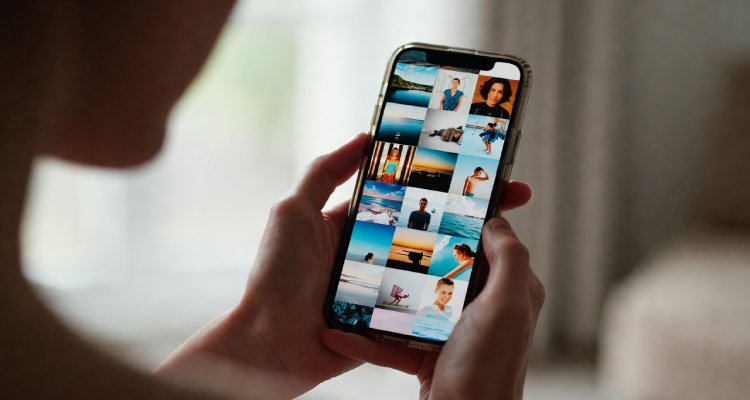The World Without Screens: Tech Minimalism Isn’t a Fad
As screen fatigue rises, tech minimalism is gaining traction—not as a fleeting trend, but a conscious shift toward digital well-being and human reconnection.
Introduction: The Silence After the Scroll
Imagine a world where your day begins not with a glowing screen, but the quiet rustle of leaves, the crackle of morning toast, or the soft chime of wind bells. In a culture hyper-saturated with notifications, streams, and digital pings, the idea of unplugging is no longer radical—it’s restorative. Welcome to the rise of tech minimalism—not a detox, not a retreat, but a deliberate way of life.
Context & Background: From Digital Dependence to Digital Discernment
Our modern lives are inseparable from screens. Americans reportedly spend more than 7 hours per day on digital devices, with nearly half that time on smartphones. The COVID-19 pandemic accelerated this dependency—remote work, virtual schooling, and social media consumption surged, creating an ecosystem where digital interactions replaced physical ones.
But this seamless digital integration has come at a cost: screen fatigue, anxiety, sleep disruption, and a fractured attention span. In response, a counter-movement began brewing. Quietly at first, then loudly—tech minimalism stepped into the conversation.
Coined during the 2010s alongside movements like digital decluttering and “dopamine fasting,” tech minimalism emphasizes conscious and intentional use of technology. It asks a fundamental question: Do our devices serve us, or do we serve them?
Main Developments: From Trend to Lifestyle Choice
Tech minimalism is gaining traction across demographics—from Gen Z college students quitting TikTok, to corporate executives installing app blockers, to families implementing screen-free Sundays. A growing number of digital natives are choosing disconnection as a form of connection.
In recent years:
- Books like Cal Newport’s Digital Minimalism have become bestsellers, advocating intentional tech use.
- Companies like Light and Punkt have released minimalist phones without social media or email capabilities.
- Subreddits like r/nosurf and forums dedicated to digital well-being are booming with users seeking to reclaim their time and focus.
- Schools in the U.S. and Europe are experimenting with tech-free zones to improve student mental health.
What distinguishes tech minimalism from a short-term detox is its long-term orientation. It’s not about abandoning technology but redesigning one’s relationship with it.
Expert Insight & Public Reaction
Psychologist Dr. Anna Lembke, author of Dopamine Nation, explains, “When we reduce our digital intake, especially from rewarding apps like Instagram or YouTube, we reset our brain’s reward system. People report higher attention, deeper relationships, and greater contentment.”
Neuroscientist Dr. Sandra Bond Chapman notes that chronic digital multitasking affects the brain’s prefrontal cortex, impairing decision-making and emotional regulation. “Tech minimalism allows the brain to recover and recalibrate,” she says.
Public sentiment reflects this shift. A 2024 Pew Research Center survey found that 67% of U.S. adults feel “mentally healthier” after reducing screen time. The same study showed a growing preference for analog activities—reading paper books, nature walks, journaling, and face-to-face conversations.
Social media, ironically, has become the platform where people share their digital sobriety journeys—using hashtags like #DigitalMinimalism, #ScreenFreeLife, and #UnplugToConnect to spread awareness.
Impact & Implications: Rethinking Tech in Everyday Life
This movement is changing consumer behavior and challenging Silicon Valley’s engagement-based design ethos.
- Hardware Shift: Demand for minimalist phones and e-ink tablets is on the rise, showing people want tools, not temptations.
- Workplace Policies: Some firms are enforcing no-email weekends or Zoom-free Fridays to foster employee well-being.
- Urban Design: Tech-free cafes, libraries, and mindfulness spaces are emerging across global cities.
There’s even policy interest: France’s “Right to Disconnect” law gives employees the legal backing to ignore after-hours emails. Other countries are watching closely.
On a personal level, people are reclaiming their time—one fewer scroll, one deeper breath at a time.
Conclusion: The New Normal Isn’t Digital—It’s Human
In a world addicted to speed and screen, choosing slow and silent is quietly revolutionary. Tech minimalism is not anti-technology; it is pro-human. It reminds us that the most valuable app we possess is attention, and the most vital upgrade we can make is presence.
This isn’t a passing wellness trend—it’s a recalibration of how we live, connect, and thrive. And for many, a world with fewer screens is not only possible—it’s finally desirable.
Disclaimer: This article is for informational purposes only and does not constitute medical or psychological advice. Please consult qualified professionals for personalized guidance on digital well-being.











